Entry Database : PDB / ID : 3faaTitle Crystal structure of TGFbRI complexed with a 2-aminoimidazole inhibitor TGF-beta receptor type-1 Keywords / / / / / / / / / / / / / / / / / / Function / homology Function Domain/homology Component
/ / / / / / / / / / / / / / / / / / / / / / / / / / / / / / / / / / / / / / / / / / / / / / / / / / / / / / / / / / / / / / / / / / / / / / / / / / / / / / / / / / / / / / / / / / / / / / / / / / / / / / / / / / / / / / / / / / / / / / / / / / / / / / / / / / / / / / / / / / / / / Biological species Homo sapiens (human)Method / / / Resolution : 3.35 Å Authors Boriack-Sjodin, P.A. / Fitch, C. Journal : Bioorg.Med.Chem.Lett. / Year : 2009Title : 2-Aminoimidazoles inhibitors of TGF-beta receptor 1.Authors : Bonafoux, D. / Chuaqui, C. / Boriack-Sjodin, P.A. / Fitch, C. / Hankins, G. / Josiah, S. / Black, C. / Hetu, G. / Ling, L. / Lee, W.C. History Deposition Nov 16, 2008 Deposition site / Processing site Revision 1.0 Jan 27, 2009 Provider / Type Revision 1.1 Jul 13, 2011 Group Revision 1.2 Nov 1, 2017 Group / Category Revision 1.3 Dec 27, 2023 Group / Database references / Derived calculationsCategory chem_comp_atom / chem_comp_bond ... chem_comp_atom / chem_comp_bond / database_2 / struct_site Item _database_2.pdbx_DOI / _database_2.pdbx_database_accession ... _database_2.pdbx_DOI / _database_2.pdbx_database_accession / _struct_site.pdbx_auth_asym_id / _struct_site.pdbx_auth_comp_id / _struct_site.pdbx_auth_seq_id
Show all Show less
 Yorodumi
Yorodumi Open data
Open data Basic information
Basic information Components
Components Keywords
Keywords Function and homology information
Function and homology information Homo sapiens (human)
Homo sapiens (human) X-RAY DIFFRACTION /
X-RAY DIFFRACTION /  SYNCHROTRON /
SYNCHROTRON /  FOURIER SYNTHESIS / Resolution: 3.35 Å
FOURIER SYNTHESIS / Resolution: 3.35 Å  Authors
Authors Citation
Citation Journal: Bioorg.Med.Chem.Lett. / Year: 2009
Journal: Bioorg.Med.Chem.Lett. / Year: 2009 Structure visualization
Structure visualization Molmil
Molmil Jmol/JSmol
Jmol/JSmol Downloads & links
Downloads & links Download
Download 3faa.cif.gz
3faa.cif.gz PDBx/mmCIF format
PDBx/mmCIF format pdb3faa.ent.gz
pdb3faa.ent.gz PDB format
PDB format 3faa.json.gz
3faa.json.gz PDBx/mmJSON format
PDBx/mmJSON format Other downloads
Other downloads https://data.pdbj.org/pub/pdb/validation_reports/fa/3faa
https://data.pdbj.org/pub/pdb/validation_reports/fa/3faa ftp://data.pdbj.org/pub/pdb/validation_reports/fa/3faa
ftp://data.pdbj.org/pub/pdb/validation_reports/fa/3faa Links
Links Assembly
Assembly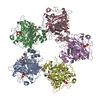
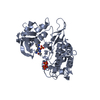

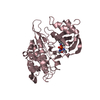
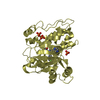

 Components
Components Homo sapiens (human) / Cell line: SF9 / Gene: TGFBR1 / Production host:
Homo sapiens (human) / Cell line: SF9 / Gene: TGFBR1 / Production host: 
 X-RAY DIFFRACTION / Number of used crystals: 1
X-RAY DIFFRACTION / Number of used crystals: 1  Sample preparation
Sample preparation SYNCHROTRON / Site:
SYNCHROTRON / Site:  NSLS
NSLS  / Beamline: X25 / Wavelength: 1.1 Å
/ Beamline: X25 / Wavelength: 1.1 Å Processing
Processing FOURIER SYNTHESIS / Resolution: 3.35→35 Å / Occupancy max: 1 / Occupancy min: 0.5 / Cross valid method: THROUGHOUT / Stereochemistry target values: Engh & Huber
FOURIER SYNTHESIS / Resolution: 3.35→35 Å / Occupancy max: 1 / Occupancy min: 0.5 / Cross valid method: THROUGHOUT / Stereochemistry target values: Engh & Huber Movie
Movie Controller
Controller


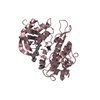


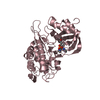



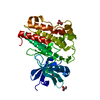
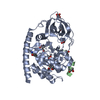

 PDBj
PDBj







